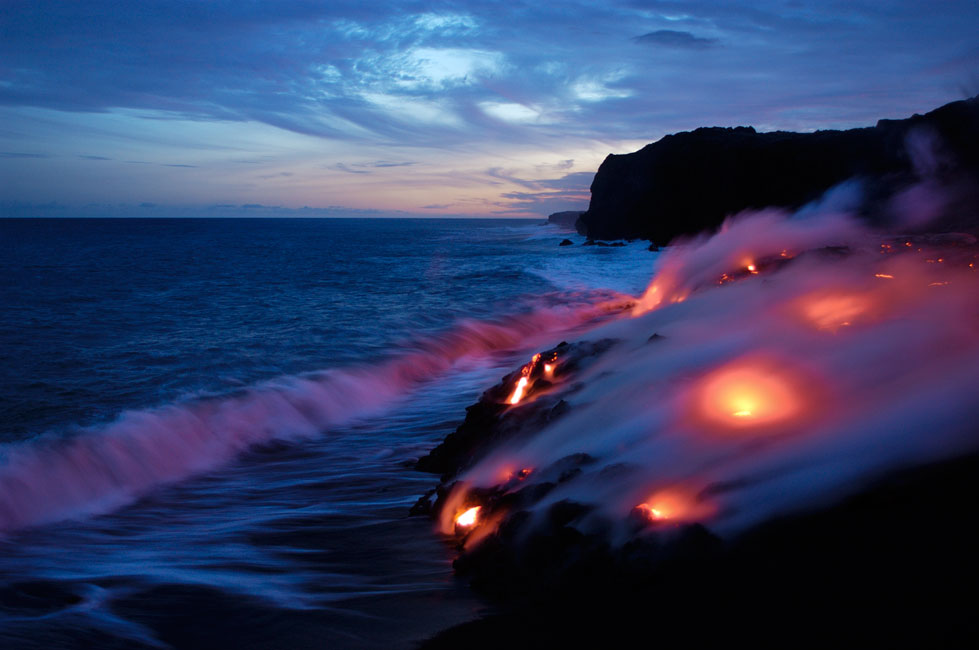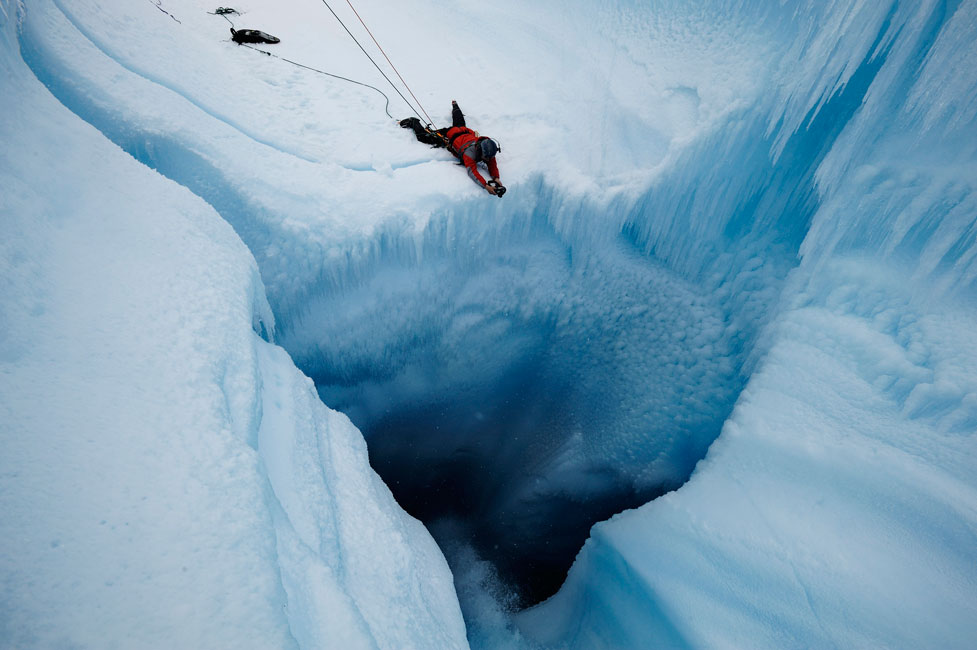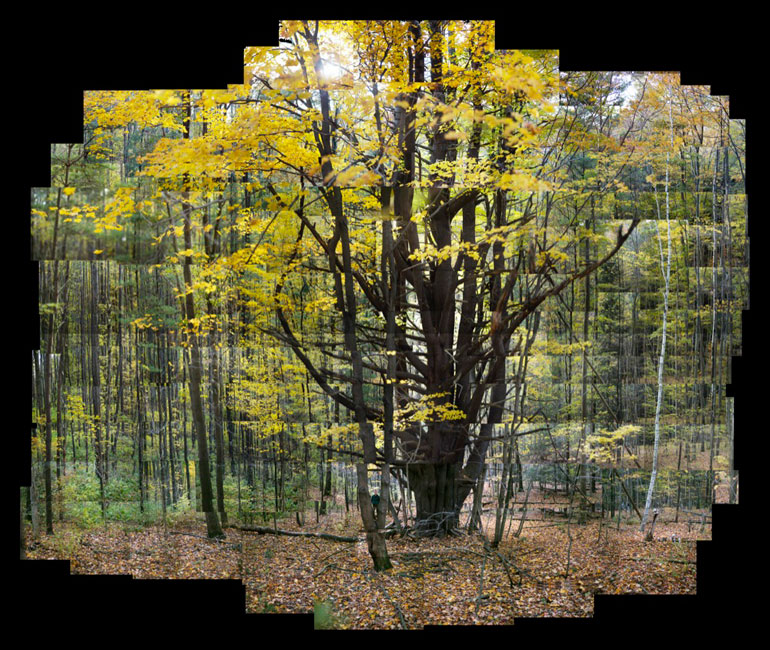Tips for Environmental Photographers
Truly excellent environmental photography is never easy. Don’t expect it to be. It can require Herculean efforts, sacrifice, discomfort, and risk.
The weird philosophy of our high-speed consumerist, narcissistic age is that everything is supposed to be fun, easy, entertaining—and perhaps even instantly profitable. Once in a while good environmental photography can be some of those things, especially the fun part. How fun is it to watch elephants at a watering hole in Africa or lava flowing down the side of a volcano? Or exploring crevasses on the Greenland ice sheet?
On Hawaii's Big Island, lava flows over a cliff from the Pu’u ‘O’o crater of the Kilauea volcano in Hawaii Volcanoes National Park, Hawaii; April 26, 2007.
But guess what? Much of the best of what humanity has done, the really big accomplishments—writing the great symphonies, building great bridges, creating a society or a government, changing the world—have always required knuckling down and being uncomfortable, if not in danger. Without a doubt, challenge comes with the territory of being an environmental photographer. You can call it a job if you want. But I don’t. It’s more a vocation, a calling, a quest, and a mission—than it is a job.
James Balog on the Greenland Ice Sheet; July 1, 2009.
A mission to do what?
To me, the mission has always been to see the world with fresh eyes. I’ve thought for years, that we environmental photographers are like the antennae on the head of the world’s caterpillar: in the vanguard of the main organism, looking around, checking out every that’s happening, interpreting the new and essential reality.
Human society has always needed innovation and vision. Without vision, as a certain book rightly says, the people perish. Perish in perhaps more of a symbolic sense than a literal sense. Perish in the sense that life eventually withers and dies on the vine without fresh ideas of what can be, that isn’t here yet. Innovation comes in so, so many venues and forms and places; we all know what they are. And one of them is environmental photography, showing society what’s true or pure or meaningful or holy or has value.
Breaking out of the cultural box isn’t simple. I’ve tried many times to do so in my creative life. In one of them, from 1998 and 2004, I went on a quest to photograph the largest, oldest, strongest trees in America. I was looking for stellar individuals, often referred to as “champion trees.” From Key West to the Pacific Northwest, from Maui to Arizona to New England, the miles traveled became uncountable.
My approach to making the images was unorthodox. So much environmental photography is fenced in by tradition and formula. We usually make an image of, say, a redwood either by standing at the base of the trunk and seeing it merge with lush groundcover or looking at a column of wood tapering upward into the sky. Good light, proper technique, and luck make such a shot an easily understood celebration of the tree. It will also be fundamentally identical to many redwood photos that came before.
I tried over and over again to do something different. I hung white backgrounds behind the trees and lit them with strobes: I was making their portraits (I said “making,” not “taking,” because the best pictures are intentionally made, not passively taken). I shot with Holgas in black-and-white. I shot multi-frame panoramas from the ground.
American Elm, Grand Traverse County, Michigan; November 7, 2000.
Eventually, I started what became a four-year-long process—gruelling, dangerous, uncomfortable, and expensive—of figuring out how to climb the trees, rappel down and shoot them as enormous mosaics. The finished composites took hundreds, then thousands, of frames. Hard work, like I said. Yet the approach was satisfying beyond my wildest dreams when it created fresh new ways of engaging with these greatest of arboreal citizens on our continent.
Eastern White Pine, Lennox, Massachusetts; October 25, 2002.
That’s an extreme example. The truth is, you don’t need to go the top of the forest canopy or the ends of the earth to make a worthwhile environmental photograph. You just have to be willing to push yourself, to challenge yourself, to take risks of all kinds. Only through that can our eyes see the world anew—and perhaps help to lead our society into greener pastures.









